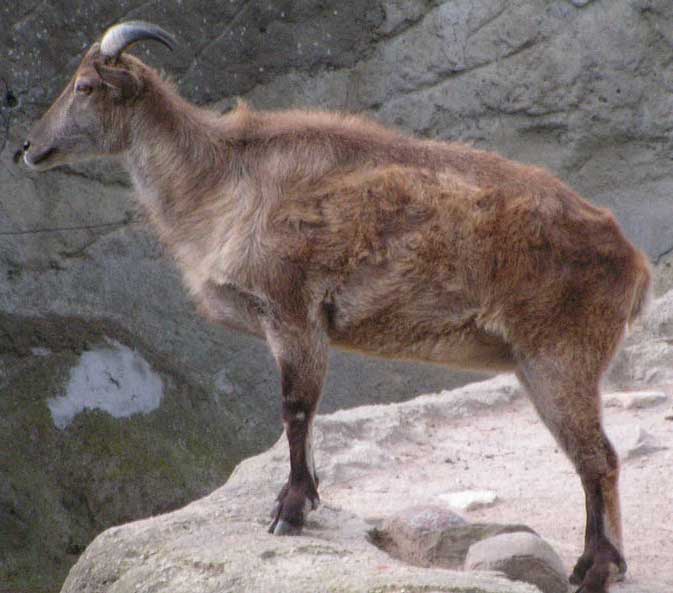Hemitragus jemlahicus (*) Cladus: Eukaryota Name Hemitragus jemlahicus (H. Smith, 1826) Vernacular names References ------------ The Himalayan Tahr (Hemitragus jemlahicus) (or Himalayan Thar) is a large ungulate related to the wild goat. Its native habitat is in the rugged wooded hills and mountain slopes of the Himalaya from Central Asia in northern Kashmir to China. They spend the summers grazing in high pastures, then come down the mountains and form mixed-sex herds in the winter. It was first identified by Charles Hamilton Smith and included in Cuvier's Animal Kingdom, 1827, etc. Traditionally, all three species of tahrs were placed in the genus Hemitragus. However, recent genetic studies have shown that the three species are not as closely related as had previously been thought. Consequently, it has been recommended moving the Nilgiri Tahr to the genus Nilgiritragus and the Arabian Tahr to Arabitragus, thereby leaving Hemitragus for the Himalayan Tahr.[2] They have small heads with large eyes and small pointed ears. Their hooves have a flexible, rubbery core that allows them to grip smooth rocks, while a hard, sharp rim can lodge into small footholds. Males are larger and have different coloration and horn structure than the females. Adult Himalayan Tahrs range from 135 to 180 kg (300 to 400 lb) in weight, 120 to 170 cm in length, and 60 to 90 cm in height. They are herbivores, subsisting on grass, shrubs, and trees. The gestation period is seven months, and usually only one kid is born at a time. The young tahr nurses for about six months, and may follow its mother for up to two years. In the wild, tahrs can live up to 15 years, though ten years is more typical. Feral Himalayan Tahr are an introduced species in the South Island of New Zealand, with herds forming in the Southern Alps. In large numbers tahr are regarded as a pest because their browsing has an impact on native vegetation. Tahr hunting is a recreational sport and commercial activity. It has also been introduced to New Mexico, California, South Africa, and Ontario. References 1. ^ Bhatnagar, Y.V. & Lovari, S. (2008). Hemitragus jemlahicus. In: IUCN 2008. IUCN Red List of Threatened Species. Downloaded on 20 December 2008. Listed as Near Threatened. Source: Wikispecies, Wikipedia: All text is available under the terms of the GNU Free Documentation License |
|


